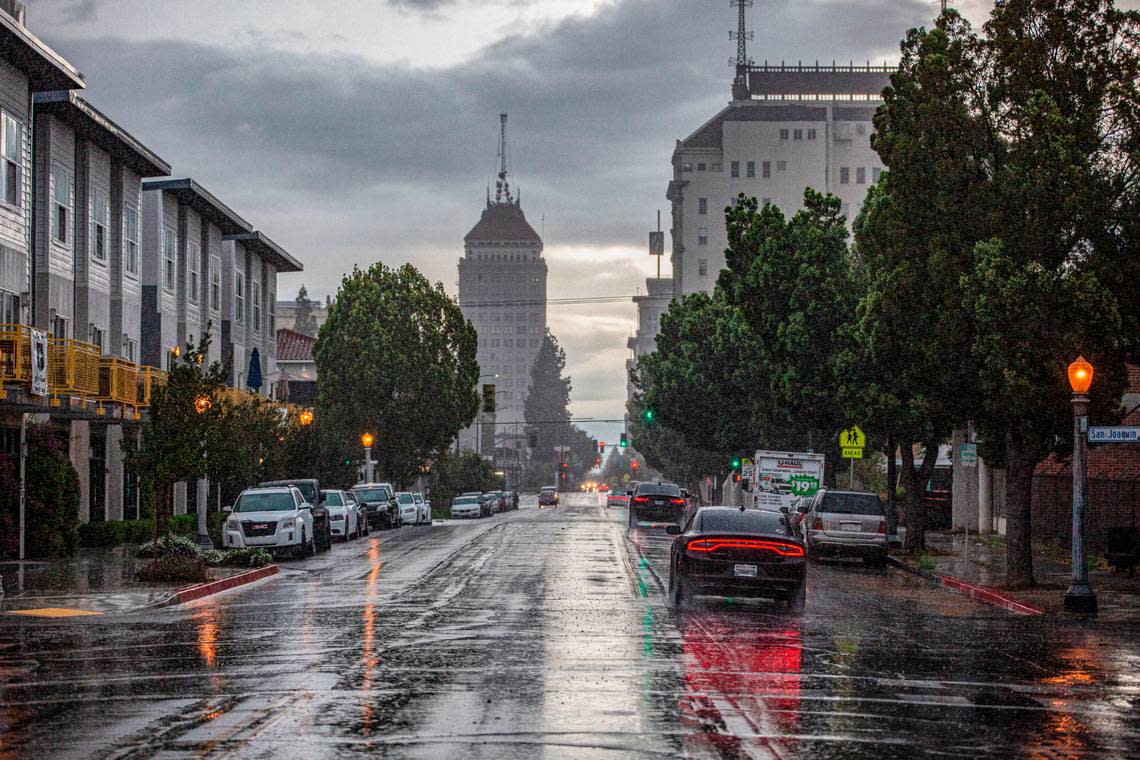Rankings seldom flatter Fresno. This recovery study delivers good news | Opinion
When it comes to rankings and studies, Fresnans learn to grow armadillo skins.
Better to absorb the constant blows.
Most polluted/dirtiest cities. Most impoverished cities. Most dangerous cities for pedestrians. Cities with the least park space. Best places to live. (Of course we’re nowhere near the top of that one.)
Even when rankings depict Fresno in a positive light, we still end up looking shady.
Recall a couple years ago when Fresno was named the most romantic city in America for singles. You could practically hear the citywide guffaw.
Opinion
Why did Fresno top the list? Essentially because we’re sleazy (our “sexual activity score” was off the charts) and a cheap date. Not exactly the most flattering portrayal.
With this sideways suspicion I recently came across a study, conducted by a research team from the University of Toronto and UC Berkeley, that tracked pandemic recovery rates among 62 North American cities and their downtowns.
And guess what? Downtown Fresno sits near the top of the horizontal bar graph at No. 3 overall.
Given the majority of news regarding downtown Fresno in recent months — major hotels shuttered (psst: the wifi still works) and anchor businesses closing their doors — I figured there had to be some mistake.
Nope. Still, these surprising findings merited a deeper dive.
Fresno scores well in pandemic recovery
The study’s overall purpose is to determine whether downtowns throughout the U.S. and Canada, which emptied out during the onset of COVID-19 when people were forced to stay home, have regained their former vibrancy. To do so, researchers used mobile phone data to examine periodic activity patterns (most recently as of Nov. 30) and compare them to pre-pandemic levels in 2019. Their findings were published in a policy brief entitled, “The Death of Downtown?”
Fresno, according to the latest update, had a recovery value of 121%. Meaning 21% more people were milling about downtown between last September and November than during the same months in 2019.
The only cities with a higher recovery value are Salt Lake City (135%) and Bakersfield (125%). Most West Coast cities don’t fare nearly as well: Sacramento (75%), San Jose (68%), Los Angeles (65%), Oakland (49%) and Portland (37%).
Dead last is San Francisco, at 31%. Poor San Francisco. Now you know how Fresno feels most of the time.
Jordan Sanchez, interim president/CEO of the Downtown Fresno Partnership and one of downtown’s primary movers and shakers, reviewed the study and raised some interesting points.
(As an aside, Sanchez is not seeking the permanent position but is heavily involved in the search for a new president/CEO following Jimmy Cerrachio’s departure in late 2022. The new hire is scheduled to be approved by the Downtown Fresno Partnership’s board of directors at its Feb. 15 meeting, she said.)
“I think it’s encouraging and confirms my personal experience,” said Sanchez, a manager at Bitwise Industries. “There are a lot of people who live, work and play down here.”
One of the biggest knocks against downtown Fresno — and the largest impediment to true revitalization of the city’s core — is the lack of housing. However in this study, that might have worked to our advantage.
While other cities saw an exodus of downtown residents during the pandemic, the few we do have stayed put.
‘Normal foot traffic has returned’
The study’s authors also found that downtown recovery depends on lower commute times and a lower share of jobs in technical, scientific and professional fields. Recovery rates are higher in cities with a high share of employment in health care, food, service industries and construction.
Jobs in government and education aren’t mentioned. But downtown Fresno is full of city and county employees who returned to their office settings.
“My sense is the normal day-to-day foot traffic has returned,” said Sanchez, who lives and works downtown.

Large events with thousands of people (and their cell phones) in attendance can also skew findings. In 2019, as Sanchez pointed out to me, the Fresno Grizzlies held their annual Taco Truck Throwdown during the summer — before the study period. Since 2021 it’s been held in October.
Increasing numbers at other regular events such as ArtHop and FresYes! Fest, which drew a record 21,000 last spring, are also helping goose Fresno’s numbers.
Another interesting side note: The study only included the 93721 ZIP code, which leaves out everything north of Tulare Avenue and west of the High-Speed Rail corridor while extending east of Highway 41 to a neighborhood full of warehouses and homeless services.
Does having a top 3 recovery rate mean downtown Fresno is revitalized? Absolutely not. We’ve got a long way to go.
But if a group of academics from Canada and the Bay Area want to put some shine on our downtown for any reason whatsoever, that’s perfectly fine by me.
Nice to feel the love once in a while.
